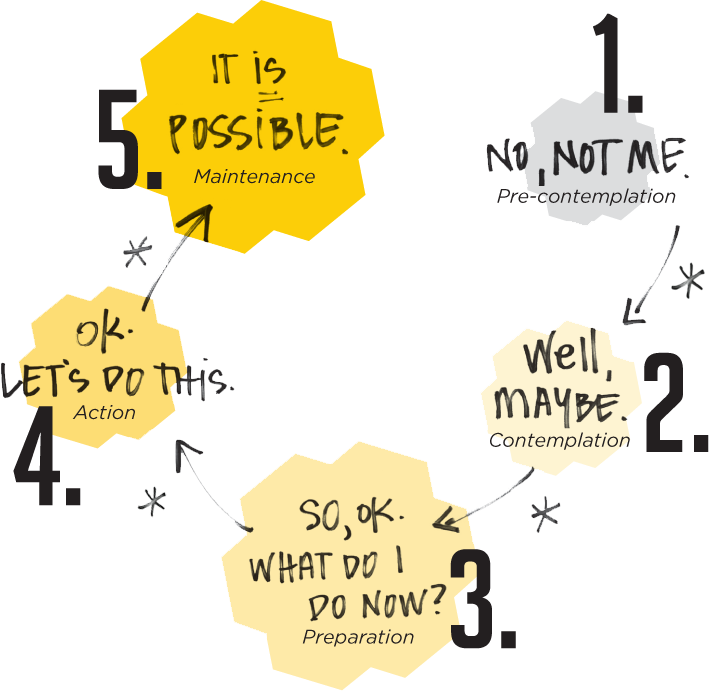With multiple studies highlighting high abandonment rates of physical activity trackers, a question is raised as to how well they perform for different individuals. One meaningful framework to characterise diversity in populations is Prochanska’s et al. Transtheoretical model, also known as the stages of behaviour change [1]. TTM suggest five stages that people will typically go through when planning and implementing a behaviour change, such as quitting smoking, or increasing physical activity. These are: precontemplation (not ready), contemplation (getting ready), preparation, action and maintenance.
In our Habito study, we found the tracker to work best for people that are in the intermediary stages of behaviour change. Individuals in the contemplation and preparation stages, who have the intention but not yet the means (i.e. motivation, strategies) to change, had an adoption rate of 56% (with adoption being defined as use that extends beyond the first two weeks), whereas individuals in precontemplation, action or maintenance stages had an adoption rate of only 20%.
Yet, these individuals (in the intermediary stages of behavior change) are only about 43% of the population that are likely to purchase an activity tracker, or download an app on their smartphones (based on our sample). So, there is a significant population of users for whom we currently fail to address their needs.
To remediate this situation, we need to ask new questions, such as, how can trackers instill initial motivation for behavior change rather than merely supporting the process of it? Individuals in the precontemplation stage are often unaware of the extent of their inactivity. As a result, initial experiences are marked by dismay as individuals realize their low activity levels. Rather than confronting users with this “truth”, one could ask how trackers could increase individuals’ perceptions of self-efficacy and competence and support them in the gradual increase of physical activity.
A second challenge is detecting the stage of behavior change individuals are in from behavioral cues. In doing so, one should bear into account that transitions across stages are not always unidirectional. Individuals often relapse to prior stages of behavior change. When this occurs, some individuals “feel like failures – embarrassed, ashamed and guilty” [6]. Future work should thus embrace behavior change as a dynamic journey, should seek to understand the experiential side of behavior change, and to design strategies that support individuals across the full spectrum of their journey.
